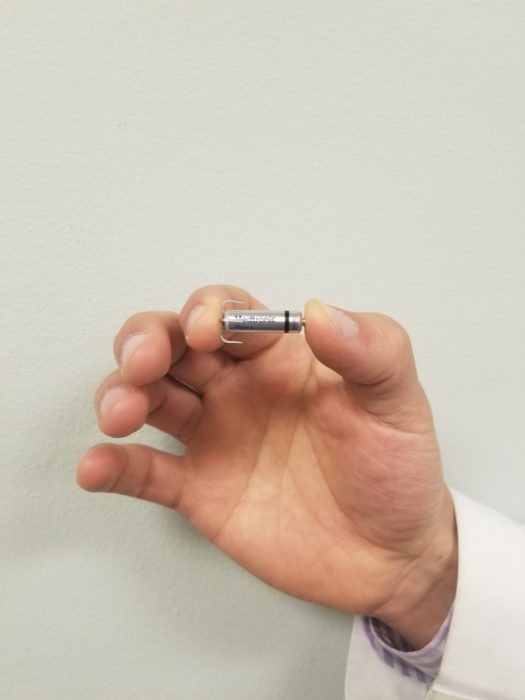World’s Smallest Pacemaker Implanted in Patient at Cheyenne Regional Medical Center
May 3, 2019
Cheyenne Regional Medical Center is the First Hospital in Wyoming to Implant the Micra Device
 Cheyenne, WY—The world’s smallest pacemaker was implanted in a patient at Cheyenne Regional Medical Center in mid-March. Cheyenne Regional is the first hospital in Wyoming to use the device.
Cheyenne, WY—The world’s smallest pacemaker was implanted in a patient at Cheyenne Regional Medical Center in mid-March. Cheyenne Regional is the first hospital in Wyoming to use the device.
The device, known as the Micra, regulates the heart rhythms of patients with bradycardia, a condition in which the heart beats too slowly.
“This device offers several advantages in that it’s small—the size of a vitamin capsule—and can be placed directly in the heart’s ventricular chamber with a catheter threaded through a leg vein,” said Dr. Oussama Lawand, the Cheyenne Regional cardiac electrophysiologist who performed the procedure.
Traditional pacemakers are bigger, about the size of a tea bag, and are surgically implanted under the skin in the upper chest. They also require a lead from the pacemaker be threaded into the heart to transmit electrical signals that help regulate the heart’s rhythm.
“The Micra doesn’t require a lead, which means one less thing that could potentially go wrong,” Dr. Lawand said. “There are also fewer post-implant restrictions for patients since the Micra is placed using a minimally invasive procedure. Most people can get back to their daily activities within a few days.”
“The patient who underwent the Micra implant at Cheyenne Regional Medical Center is doing well,” Dr. Lawand said. “The patient has more energy and is feeling much better overall.”
All pacemakers, including the Micra, are designed to regulate the heart’s natural rhythm when there are disturbances. A pacemaker will send an electrical impulse to the heart when the heart’s own rhythm is too slow or interrupted. A pacemaker also monitors the heart’s natural electrical activity. It will not deliver an electrical pulse when the heart is beating normally.
“The Micra is a good alternative for certain arrhythmia patients in that it provides heart rhythm pacing and sensing without having a visible or physical reminder that a device is present,” Dr. Lawand said.
The Micra received FDA approval for use in the United States in 2016, when U.S. News and World Report named the device “2016’s Biggest Achievement in Medicine.” To date, more than 35,000 Micra devices have been implanted in patients worldwide.
“The Micra isn’t appropriate for all heart arrhythmia patients,” Dr. Lawand said. “But for those who meet the criteria, it’s a good option and one that is now available close to home for people in Cheyenne and the surrounding region.”